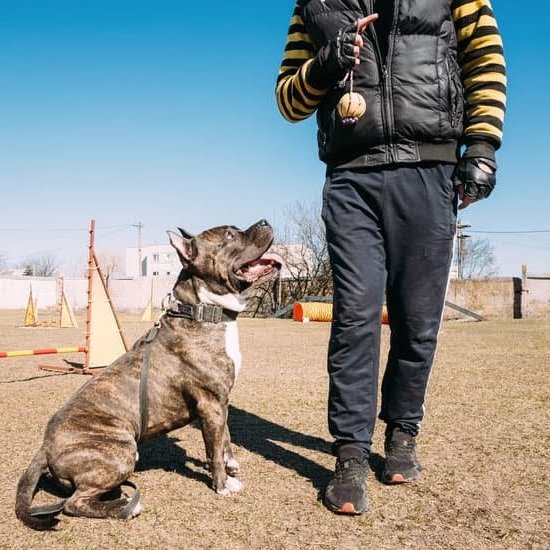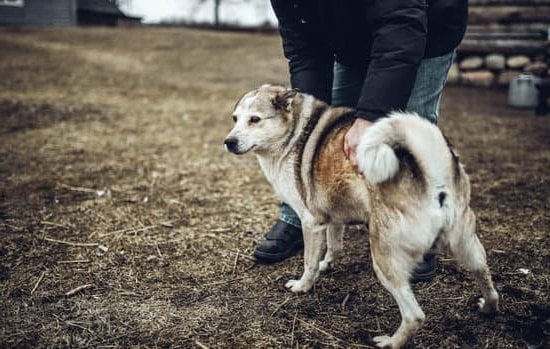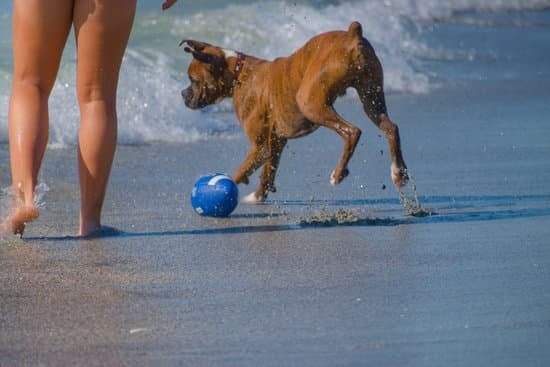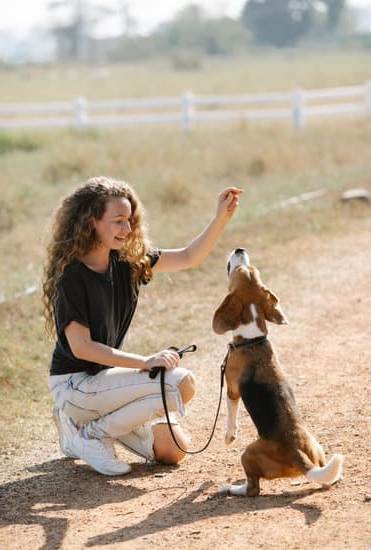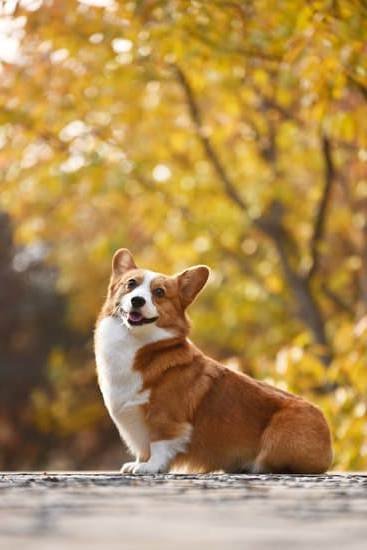Introduction
Puppy training is the process of teaching a pet dog to be obedient, respond to commands, and behave in a socially acceptable manner. Training a puppy is important as it lays down the foundation for the pup’s future development and helps create an environment at home where the pup is comfortable and relaxed. This makes life easier for both your pup and you as the owner. Puppy training also encourages positive behavior from the pup, reduces unwanted behaviors such as barking or jumping on people, and allows pet owners to become closer with their pet by helping foster trust between them.
What You Need to Know Before Starting Puppy Training
Before you start puppy training, it is important to understand that you need to be patient and consistent in order for your training efforts to be successful. Training a puppy can take several months because puppies are still developing their understanding of the world around them. During this time, be sure to use positive reinforcement methods such as treats and praise whenever your pup follows instructions correctly. It is also important to give puppies plenty of time to take breaks during training sessions rather than expecting too much from them all at once. Furthermore, create a schedule and stick with it so that they continue to make progress as they learn new commands. While it may take some time and patience, if you are consistent with your approach and remain positive while training, you will soon be rewarding good behavior with delicious treats!
What to Expect in a Typical Puppy Training Session
When it comes to puppy training, the time and effort put into teaching your pup the basics can have a lasting impact. Depending on the type of puppy you have (like if they’re particularly easily distracted), the amount of time it may take to successfully complete the training can range significantly. In general you should expect most basic puppy training to take several weeks or even months.
A typical puppy training session should include some kind of warm-up activity that gets your pup mentally ready for working together with you. Depending on your schedule, you’ll probably want to keep a consistent timeframe for each session so that your pup starts recognizing that it’s structure and a sign of fun ahead! Also, repetition is key when it comes to dog training; having multiple short sessions per day is much more effective than one long session every now or again. To start off, focus on basics like sit, stay, shake paw and come when called. Also try activities like leash walking, crate training, socializing with new people and practice proper potty etiquette. As your pup becomes more comfortable with commands, start introducing more difficult concepts such as leave it!, no jumping up on people and solving more complicated obedience tasks. As long as you remain both patient and gentle throughout this process and reward them whenever they succeed – you’ll be well on your way to having a well-trained pooch in no time!
Factors That Impact the Length of Puppy Training
Puppy training can be a lengthy process and it can vary depending on a few factors. First, the age of the puppy plays an important role in how long puppy training will take. Generally, a puppy between eight and sixteen weeks is considered the ideal age to start because they are capable of learning basic commands more quickly and efficiently at this stage. Additionally, the type of command being taught affects how long a puppy might take to learn. Some basic commands like sit, down and come are generally quicker to teach than complex ones such as leave it or go to your bed. Furthermore, each individual puppy learns differently due to past experiences and environment, therefore what works for one pup may not work for another. Finally, the owner’s commitment level influences training duration; having consistent sessions without gaps throughout the week can help expedite the process.
Doubling Your Playtime with Puppy Training Activities
Puppy training activities should be a part of your pup’s life from the very beginning. Start by increasing the amount of time you are playing with your pup each day to help it grow more comfortable with your presence and authority. Playing activities such as hide-and-seek, tag, fetch and fishing can help engage them both mentally and physically while still being enjoyable. Being able to practice commands like come, stay, heel and sit will make sure that your pup is learning quickly by helping them associate certain keywords with desired behaviors. It’s important to keep these activities fun, age appropriate and consistent so as not to overwhelm or frustrate them. A professional pet trainer may also be beneficial if you need advice on how best to start the process or have difficulty teaching the pup certain behaviors.
Generally speaking, puppy training should begin at around 8 weeks old when their perceptual skills have been developed enough for a successful outcome. During this time, your pup needs patience and consistency above all else as they learn how to behave appropriately in social settings. Allow for consistent repetition of teaching moments as this helps reinforce learned behavior without resorting to punitive measures which could lead to anxiety in the pup later on. Training varying environments helps prepare them for potential future experiences such as visits from guests or going out into the neighborhood together – these are important aspects of the whole process so don’t forget about them! Lastly, reward-based techniques should always be used rather than punishments in order for the pup to understand what is expected of them and why; reward successes with treats or affection given after completing tasks correctly whilst redirecting any undesired responses in an effective manner towards desirable action instead of punishing bad behavior afterwards which could ultimately reduce trust between you two and result in negative long-term effects.
Choosing the Right Toys and Tools for Training
When it comes to training your puppy, the right tools and toys can make the process much easier. These items can help to distract or motivate your pup while they are learning a new command or behavior. There are a variety of different types of toys and tools available that you can use for your pup’s training sessions. Of course, selecting the right ones can be tricky but with a bit of research, you can find the best ones for your dog.
Toys used in training should be appropriate for the size and age of your pup; small toys are ideal for puppies as well as treats that offer rewards when desired behaviour is achieved. Chew toys can also be helpful; however, ensure that they are made from safe materials for chewing such as rubber or plastic, rather than cloth or fabric which may become a choking hazard. In addition, large plush animals may entice and excite puppies but could end up being dangerous if torn apart.
Tools such as whistle signals, clickers, lures and reward systems like treat bags may all aid in teaching your dog commands and behaviors. Whistle signals are useful in alerting dogs to negative or positive reinforcement while clickers may be used with commands to startle dogs out of distraction allowing them to focus on a task at hand. Lures refer to food rewards that you can use during training time to engage and motivate pups while reward systems are a great way to show encouragement when your pup has done something right. Utilizing these pieces together can help create an effective puppy-training plan so it is important to understand how each works to achieve success!
When it comes down to actually figuring out how long it will take before these methods prove successful, this varies from one family/dog pairing to next due largely on consistency – if everyone involved sets aside dedicated time daily for their puppy’s training these results should come about more quickly. Weekly meetings should also be had with trainers who will bring fresh perspectives suited specific needs ranging from basic commands to more complex tasks (agility runs etc). It is recommended that puppies attend socialization class sometime between 8-16 weeks old; this promotes healthy adaptivity in various environments and plays a key role in helping your pup develop into its full potential later down life’s road while instilling proper etiquette during walks/activities outside the home front as well!
Positive Reinforcement and the Rewards Parcel
Dog puppy training is an essential part of having a happy, healthy and well-behaved pet. This process helps your dog to understand the commands and behaviors expected from them so they can better fit into their new home. Training your puppy should start as soon as you get them. Different puppies will learn at different rates, but it is recommended that obedience training begins at around 8 weeks old when basic commands such as sit and stay can be taught.
Positive reinforcement is one of the most important parts of dog puppy training. Positive reinforcement is when rewards, such as treats or praise, are given for doing something correctly or behaving properly. This encourages agreeable behavior and allows the pup to develop trust with its owners. It also reinforces happy relationships between pet and owner which enables constructive learning in other areas. A rewards parcel is a great way to use positive reinforcement effectively in dog puppy training – this involves setting up a scheme where certain behaviors are rewarded with treats and praise which will help with their development throughout the course of their training.
Challenges of Training Puppies
Training puppies is an important step in their development and one that isn’t without its challenges. There are a variety of factors to consider when it comes to how long puppy training should take, such as the breed, size, and energy level of the pup. With smaller breeds, for example, tasks such as potty training can be completed in a shorter period because they reach full physical maturity faster than larger breeds. With medium to large breeds, potty training may take longer because they physically need more time to mature before they can properly learn housebreaking techniques.
In addition to breed and size differences, puppies also vary greatly in terms of energy levels and attention spans. High-energy puppies tend to be more difficult to train than their calmer counterparts due to their need for constant stimulation and exercise – these pups often require more intentional planning and creative solutions to keep them engaged during the learning process. On the other hand, lower energy puppies require less planning but more consistency with commands in order to help them internalize what they’re being taught. No matter what type of pup you have, it’s essential that you establish a routine early on so that your pup knows what is expected of them when it comes time for training and whether those expectations have been met or not.
Ultimately, how long puppy training takes depends on several different factors. While some aspects of basic learned behaviors may only take weeks or months for your pup to master, others such as socializing with other animals or people will require ongoing practice and engagement over an extended period of time in order to help ensure your pup grows up well-adjusted and socialized. Additionally, some advanced obedience behaviors can take years for your pup to thoroughly understand – this is why patience is key when it comes to puppy training – setting expectations too high can cause frustration for both you and your furry friend!
Wrapping It Up Successful Socialization and Lasting Results
Dog puppy training must start as soon as you bring your pup home, and the foundational skills learned in the very first weeks of life will shape the kind of adult dog they become. Even at this young age it is important to set clear expectations, establish boundaries, and ensure that they are as safe, secure and socially competent as possible.
The exact timeline of your puppy’s socialization period is going to depend on the individual dog. Some puppies reach maturity by 8 months old, while for others it may take up to one year or even longer for them to completely adjust to their new environment and learn proper behavior. Ideally, you want to expose them to different types of situations before their 13th week, so that you can be sure that they are getting all the experiences necessary for a well-rounded development, including interactions with children, adults from various cultural backgrounds, other pets and animals.
It’s important not only to introduce a puppy to these different stimuli but also teach them how to behave politely in new situations: how to greet other people or animals without jumping up; appropriate forms of play; ways of asking permission before taking something; etc. A good socialization plan may involve regularly audio recordings of noises like fireworks or thunder in order for them not to become over-sensitive or anxious when confronted later on with such sounds outside the home context.
To maximize success in dog puppy training it is critical also not only educate yourself on effective learning models and appropriate rewards schedules but also have patience when it comes time teaching and interacting with your pup: remember they are still babies learning how the world works! Over time consistency will breed rewarding results – you should observe an increase in self-confidence which in turn can bring about lasting changes that will last into adulthood – so hang tight even when things get challenging and don’t give up expanding the boundaries until safety has been established!

Welcome to the blog! I am a professional dog trainer and have been working with dogs for many years. In this blog, I will be discussing various topics related to dog training, including tips, tricks, and advice. I hope you find this information helpful and informative. Thanks for reading!

